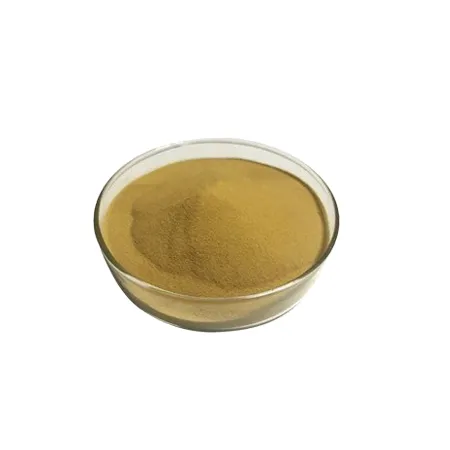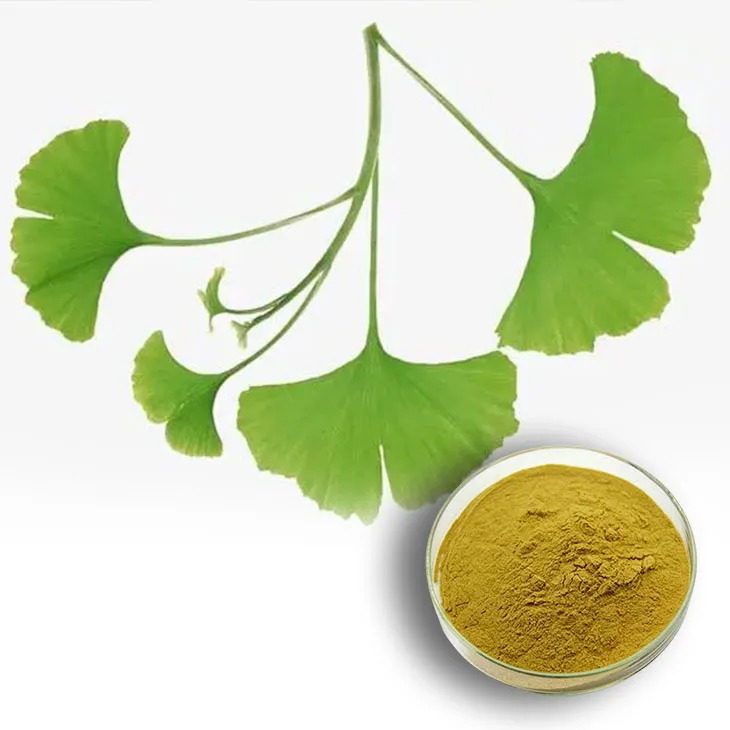- 0086-571-85302990
- sales@greenskybio.com
How to make powder with ginkgo biloba extract.
2024-11-30

1. Introduction to Ginkgo Biloba Extract
Ginkgo biloba, a unique and ancient tree species, has been highly regarded for its various beneficial properties. The extract from ginkgo biloba contains a rich cocktail of bioactive compounds, which are of great significance in different fields.
1.1 Health - Promoting Properties
Ginkgo biloba extract is renowned for its potential positive impacts on human health. It has been studied for its ability to improve cognitive function. For example, it may enhance memory, concentration, and overall mental performance. This is attributed to its antioxidant properties that help protect brain cells from oxidative stress.
It also shows promise in promoting cardiovascular health. It can potentially improve blood circulation by dilating blood vessels, which in turn may help in reducing the risk of heart diseases. Additionally, some studies suggest that it has anti - inflammatory properties, which can be beneficial in alleviating various inflammatory conditions in the body.
1.2 Potential in Various Industries
In the pharmaceutical industry, ginkgo biloba extract is a valuable ingredient in the development of drugs. Its bioactive compounds can be formulated into medications aimed at treating cognitive disorders and cardiovascular diseases.
The cosmetic industry has also shown interest in ginkgo biloba extract. Due to its antioxidant properties, it can be incorporated into skincare products to protect the skin from damage caused by free radicals. This can lead to anti - aging effects such as reducing wrinkles and improving skin elasticity.
In the food and supplement industry, ginkgo biloba extract is often used to produce dietary supplements. These supplements are popular among consumers who are interested in maintaining good health and enhancing their cognitive and cardiovascular functions.

2. Extraction Methods of Ginkgo Biloba Extract
2.1 Solvent Extraction
Solvent extraction is one of the most common methods used to obtain ginkgo biloba extract. In this process, a suitable solvent is selected based on the solubility of the desired compounds in ginkgo biloba.
- Firstly, the ginkgo biloba leaves or other parts of the plant are dried and ground into a fine powder. This increases the surface area available for extraction.
- Then, the powdered plant material is mixed with the solvent. Commonly used solvents include ethanol, methanol, or ethyl acetate. The mixture is stirred or shaken for a certain period to ensure proper contact between the solvent and the plant material.
- After that, the mixture is filtered to separate the liquid extract containing the bioactive compounds from the solid plant residue.
2.2 Supercritical Fluid Extraction
Supercritical fluid extraction is a more advanced and environmentally friendly method. In this technique, a supercritical fluid, typically carbon dioxide (CO₂), is used as the extracting agent.
- The CO₂ is brought to its supercritical state by adjusting the temperature and pressure. In this state, it has properties of both a liquid and a gas, which allows it to penetrate the plant material effectively and dissolve the target compounds.
- The supercritical CO₂ is passed through the ginkgo biloba material in an extraction vessel. The dissolved compounds are then separated from the CO₂ by changing the pressure or temperature, causing the CO₂ to return to its gaseous state and leaving the extract behind.

3. Purification Steps of Ginkgo Biloba Extract
3.1 Filtration and Centrifugation
After extraction, the obtained ginkgo biloba extract may contain impurities such as plant debris, undissolved solids, and other unwanted substances. Filtration is the first step in purification.
- A simple filter paper can be used for initial filtration to remove larger particles. However, for more thorough filtration, membrane filters with different pore sizes can be employed depending on the size of the impurities to be removed.
- Centrifugation can also be used in combination with filtration. By spinning the extract at high speeds in a centrifuge, heavier particles are forced to the bottom of the centrifuge tube, separating them from the liquid extract.
3.2 Chromatographic Purification
Chromatography is a powerful technique for purifying ginkgo biloba extract further. There are different types of chromatography that can be applied, such as column chromatography and high - performance liquid chromatography (HPLC).
- In column chromatography, the extract is passed through a column filled with a stationary phase. Different compounds in the extract interact differently with the stationary phase, causing them to be separated as they move through the column at different rates.
- HPLC is a more advanced form of chromatography. It uses high pressure to force the extract through a column filled with a very fine stationary phase. This allows for better separation and purification of the bioactive compounds in ginkgo biloba extract.

4. Drying Techniques for Ginkgo Biloba Extract
4.1 Spray Drying
Spray drying is a widely used method for converting liquid ginkgo biloba extract into powder.
- The liquid extract is first atomized into fine droplets using a spray nozzle. These droplets are then introduced into a drying chamber where hot air is blown.
- The hot air rapidly evaporates the solvent from the droplets, leaving behind dry powder particles. The drying conditions, such as the inlet and outlet temperatures of the hot air, need to be carefully controlled to ensure the quality of the powder.
4.2 Freeze Drying
Freeze drying, also known as lyophilization, is another option for drying ginkgo biloba extract.
- First, the liquid extract is frozen at a very low temperature. This helps to preserve the structure and bioactivity of the compounds in the extract.
- Then, the frozen extract is placed in a vacuum chamber. Under vacuum, the ice in the frozen extract sublimes, directly changing from a solid to a gas without passing through the liquid phase. This results in a dry powder with high - quality characteristics.

5. Conclusion
The process of making powder from ginkgo biloba extract involves several crucial steps, from extraction to purification and drying. Each step plays a vital role in obtaining a high - quality powder with the desired properties. Understanding these procedures is essential for those involved in the production of ginkgo biloba - based products, whether in the pharmaceutical, cosmetic, or food and supplement industries.
FAQ:
What are the health - promoting properties of ginkgo biloba extract?
Ginkgo biloba extract is believed to have several health - promoting properties. It may improve blood circulation, which can be beneficial for cognitive function as it helps deliver oxygen and nutrients to the brain. It also has antioxidant properties that can help combat free radicals in the body, potentially reducing oxidative stress. Some studies suggest it may have a positive impact on memory and concentration, and it might also play a role in reducing symptoms associated with certain age - related conditions such as dementia and Alzheimer's, although more research is needed in this area.
What are the common extraction methods for ginkgo biloba extract?
One common extraction method for ginkgo biloba extract is solvent extraction. Organic solvents like ethanol or ethyl acetate are often used. The plant material is soaked in the solvent, which helps to dissolve the active compounds. Another method is supercritical fluid extraction, typically using carbon dioxide as the supercritical fluid. This method can be more selective and can produce a purer extract. Additionally, aqueous extraction, where water is used as the solvent, can also be employed, especially for extracting water - soluble components of the ginkgo biloba.
Why is purification necessary when making powder from ginkgo biloba extract?
Purification is necessary when making powder from ginkgo biloba extract for several reasons. First, the raw extract may contain impurities such as plant debris, other non - active compounds, or even traces of the extraction solvent. These impurities can affect the quality, stability, and effectiveness of the final powder product. Purification helps to remove these unwanted substances, ensuring that the powder contains a higher concentration of the desired active components. It also helps to standardize the product, making it more consistent in terms of its chemical composition and biological activity.
What are the suitable drying techniques for ginkgo biloba extract powder?
There are several suitable drying techniques for ginkgo biloba extract powder. One common method is spray drying. In this process, the liquid extract is sprayed into a hot air stream, which quickly evaporates the moisture, leaving behind a fine powder. Another option is freeze - drying, also known as lyophilization. Here, the extract is frozen and then the water is removed by sublimation under reduced pressure. Freeze - drying can preserve the bioactivity of the extract better than some other drying methods, but it is often more expensive. Vacuum drying is also a viable technique, which reduces the drying time and helps to protect the extract from oxidation due to the low - oxygen environment.
How can the quality of ginkgo biloba extract powder be ensured?
To ensure the quality of ginkgo biloba extract powder, several steps can be taken. Firstly, starting with high - quality raw materials, such as fresh and properly sourced ginkgo biloba leaves or other plant parts, is crucial. During the extraction process, strict control of parameters like temperature, time, and solvent concentration is necessary. After extraction, thorough purification processes should be carried out to remove impurities. The drying process should also be carefully monitored to avoid over - drying or under - drying, which can affect the powder's properties. Additionally, quality control tests such as assays for the active compounds, purity tests, and microbiological tests should be performed regularly.
Related literature
- Ginkgo Biloba Extract: Properties, Applications, and Toxicology"
- "The Chemistry and Pharmacology of Ginkgo Biloba Extract"
- "Processing of Ginkgo Biloba Extract: From Plant to Powder"
- ▶ Hesperidin
- ▶ citrus bioflavonoids
- ▶ plant extract
- ▶ lycopene
- ▶ Diosmin
- ▶ Grape seed extract
- ▶ Sea buckthorn Juice Powder
- ▶ Beetroot powder
- ▶ Hops Extract
- ▶ Artichoke Extract
- ▶ Reishi mushroom extract
- ▶ Astaxanthin
- ▶ Green Tea Extract
- ▶ Curcumin Extract
- ▶ Horse Chestnut Extract
- ▶ Other Problems
- ▶ Boswellia Serrata Extract
- ▶ Resveratrol Extract
- ▶ Marigold Extract
- ▶ Grape Leaf Extract
- ▶ blog3
- ▶ blog4
-
The best lemon juice powder in nature.
2024-11-30
-
Organic Vitamin K2 Powder Suppliers
2024-11-30
-
Bulk purchase of L - tyrosine.
2024-11-30
-
Vitamin K2 Manufacturers
2024-11-30
-
100% Pure Natural Rutin.
2024-11-30
-
Chinese Citrus Bioflavonoid Suppliers.
2024-11-30
-
Cactus Extract
2024-11-30
-
Artichoke Leaf Extract
2024-11-30
-
Hops Extract
2024-11-30
-
Tinospora cordifolia extract
2024-11-30
-
Clove Powder
2024-11-30
-
Camu Camu Extract
2024-11-30
-
Bilberry Extract
2024-11-30
-
Europen Bilberry Extract
2024-11-30
-
Withania Somnifera Extract
2024-11-30
-
Acerola Juice Powder
2024-11-30





















